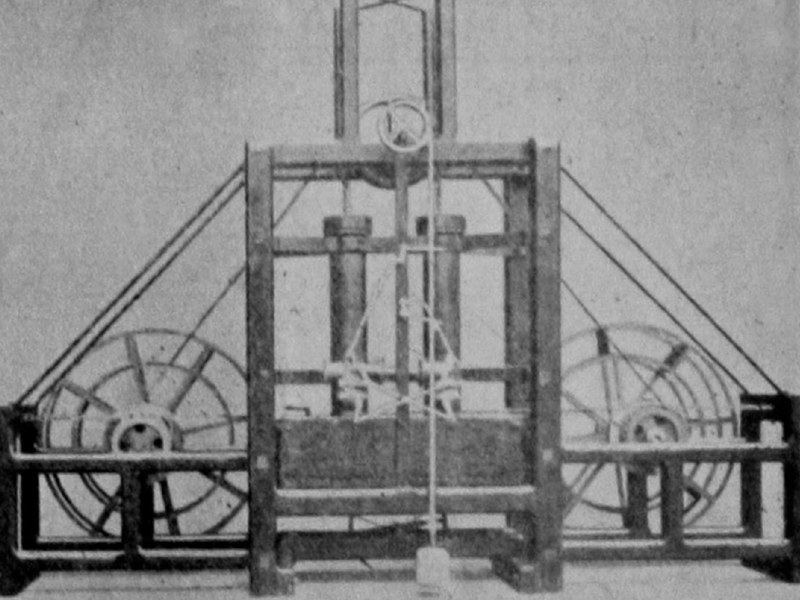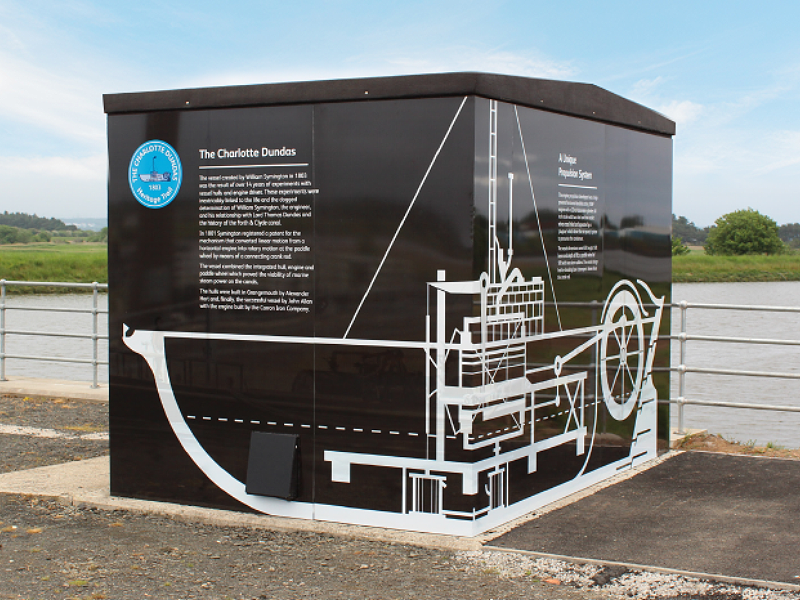Inventor and Engineer
In 1788, when asked by Patrick Miller of Dalswinton House near Dumfries to fit a steam engine to a boat to drive the paddlewheels, Symington adapted his steam carriage engine and the boat was tested on Dalswinton Loch. Miller, who was a shareholder in the Carron Iron Company requested that William go to the ironworks to design a more powerful engine for a larger boat called ‘Experiment’. Trials took place in 1789 and although satisfactory, Miller withdrew his support. Symington went back to working on stationary engines, building over 20 to his first patent between 1790 and 1800.
William Symington became consulting engineer at the Carron Company, bringing in numerous orders to the works, where he was held in very high regard.
Many engines were built to his design including three for James Bruce the ‘Abyssinian traveller’ of Kinnaird estate near Larbert.
William Symington took up residence at Kinnaird managing the colliery after James Bruce died in 1794, then William Cadell’s Grange Colliery near Bo’ness.
In 1800, Sir Thomas Dundas, Governor of the Forth & Clyde Canal Company, asked Symington to build a steamboat for use on the canal. An initial vessel incorporating Symington’s engine was built by Alexander Hart in 1801. A perfected boat, also named ‘Charlotte Dundas’ after Lord Dundas’s daughter, was successfully tested in March 1803. Regrettably, the canal’s board of directors declined to pursue the project and after the trials were halted, William Symington became the manager at Falkirk’s Callendar Colliery. He lived to see others profit from his creative brilliance, dying in relative poverty in London in 1831. Symington’s achievements were outstanding, and he ranks among the great Scottish engineering pioneers such as James Watt and William Murdoch.
A Unique Propulsion System
William Symington’s engine for The Charlotte Dundas was a high powered horizontal double acting 10HP engine with a 22 inch diameter cylinder and 48 inch stroke with two inlet and outlet valves. This arrangement was linked and operated by a ‘plugtree’ which drove the air pump’s piston to pressurise the condenser.
The vessel was 65ft long with a 16ft beam and a depth of 8ft and a paddle wheel of 10ft with two stern rudders. Later iIlustrations of the vessel’s design featured ice breaking bow ‘stampers’ driven from the crank rod.
The Charlotte Dundas was the world’s first practical steam powered ship and the forerunner of the great stern wheelers which worked the great rivers of North America.
The Steamboat Revolution
William Symington’s early experiments attracted the attention of two engineers who went on to develop steam navigation on both sides of the Atlantic.
Both Henry Bell and Robert Fulton had an interest in the experiments conducted in England and America and especially the success of Symington. There is evidence that both men witnessed the trials of the Charlotte Dundas on the canal.
Bell, from nearby Torphichen, eventually launched the ‘Comet’ on the Clyde at Port Glasgow in 1812, five years after Fulton’s ‘Clermont’ had gone into service on the River Hudson in New York.
Bell and Fulton had been in correspondence for some years, and both acknowledged their debt to Symington.


-
Did you know? Symington proved the viability of marine propulsion and was a major influence in the industrial revolution
-
Did you know? The Charlotte Dundas was the world’s first practical steam powered ship and forerunner of the American paddle steamers
-
Did you know? The Charlotte Dundas preceded the ‘Clermont’ on the River Hudson by 5 years and the ‘Comet’ on the River Clyde by 9 years




